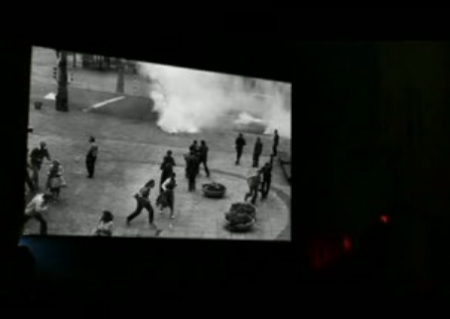
Strong discussion on the polish internet takes place nowadays because of the Fiat advertisement created by Leo Burnett. This polish version of very similar conceptions which could be seen in France or Italy is now being accused of using public memory for the commercial purposes:
To tell the truth, Fiat became a part of polish history. But for many people using an image of Solidarity movement, Lech Wa??sa, John Paul II or even the Warsaw Uprising in the advertisement is a violation of principle in which great historical moments and personalities can not be owned by any political or commercial circle – they are a public domain of memory and can not be credited to the one company or political party.
In this case there is – over this main problem with ownership of social memory – another level of controversy. The Solidarity logo used in this advertisement is an exclusive and legally protected property of the Union (trademark). It is very possible that actual leaders of „Solidarno??“ will act against this copyright violation.
Surely it is worth to see this case in a wider context. Who owns the history? Can public memory be used in a commercial way? As well as in the matter of historical sport statistics from american baseball league, questions about the range of copyrights in history can be asked. And more – if Domesday Book is a part of the common historical british heritage, why National Archives (financed of the public taxes) asks for money for the access to the digital scans of it? Why photographers from polish Wikipedia can not take photos in Wawel, the famous seat of the polish kings? What with the historical resources?
This topic becomes more and more important, as it is so much easier to use, copy, remix or edit historical resources available on the internet or collected by using digital tools (digital camera). There are also some questions for the future: how to legally collect the internet heritage?


Der Beitrag verkennt, wenn er sich auf die „public domain of memory“ beruft, grundsätzlich die Implikationen der public domain. Diese soll jeder unabhängig von seinem Zweck (und das heisst auch: kommerziell) benutzen können, soweit dies – dies wäre aufgrund der Debatte um „Mona Lisa“ im deutschen Markenrecht zu ergänzen – nicht neue Ausschließlichkeitsrechte begründet, die die Public Domain beeinträchtigen. Durch die Verwendung von Elementen des nationalen Gedächtnissen in einer Werbung wird das Gedächtnis nicht „enteignet“. Wer sollte außerdem bestimmen können, was ein angemessener und was ein unangemessener Gebrauch ist? Die benetton-Entscheidung des Bundesverfassungsgerichts hat überzeugend aufgezeigt, dass auch Werbung am Schutz der Meinungsfreiheit teilhaben kann. Werbung will verkaufen, sie geht aber darin nicht auf: sie ist zugleich ein Forum der gesellschaftlichen Auseinandersetzung.
Hi Marcin
I do not quite agree. I think you are right with your notion, that no company or political party can become an owner of a particular part of history that „belongs“ to the society as such, like the examples you give: lech walesa talking, the pope kissing, people rallying – whatever happens on public ground surely is part of a public memory.
but the commercial (as a sequence of moving pictures) in question is not an attempt of owning, but rather of borrowing (or appropriate or usurp) the public memory for a commercial objective. that’s questionable – but as kg points out in his commentary, is not against the idea of public domain, which also means, that everybody can use objects of public domain for it’s own use, even if it is commercial – unless it is otherwise noted (like in some part of the creative commons licenses).
Even the Solidarnosc-logo, which is copyrighted, does not support any other argument. Fiat could very well just buy the right to use the logo in a commercial. This leads to other questions: would Solidarnosc let Fiat use its logo, and if not: can it be prohibited, if the logo is popping up in a – let’s say – news report of the time, where a television crew filmed Walesa in front of the Solidarnosc-logo, and further on.
But I want to point out something else, and you mention it in your last paragraph: What about accessibility of objects that belong or should belong to public domain? Why are those objects shut away and cannot be published without restriction or (what Fiat could do, but Wikipedia can’t) paying royalties? That’s what is bothering me. So, finally, I do agree to some extent – but in another way.
Kurzversion auf Deutsch:
Ich finde die Nutzung von Quellen aus der „public domain“ für kommerzielle Zwecke nicht weiter problematisch (und gehe hier mit kg einig). Zu denken gibt mir die Kommerzialisierung und Überschützung von Quellen aus urheberrechtlichen Gründen, die eine Nutzung von „public domain“-Materialien verunmöglich oder zu einem Privileg wohlhabender Firmen werden lässt. Wenn sich Fiat einen Werbefilm zusammenschneiden kann, weil es urheberrechtliche Schutzgebühren bezahlen kann, eine Lehrperson oder eine Schülerin/ ein Schüler für das Gleiche mit Strafandrohung, Busse und Gefängnis rechnen muss – das finde ich eher beklagenswert.